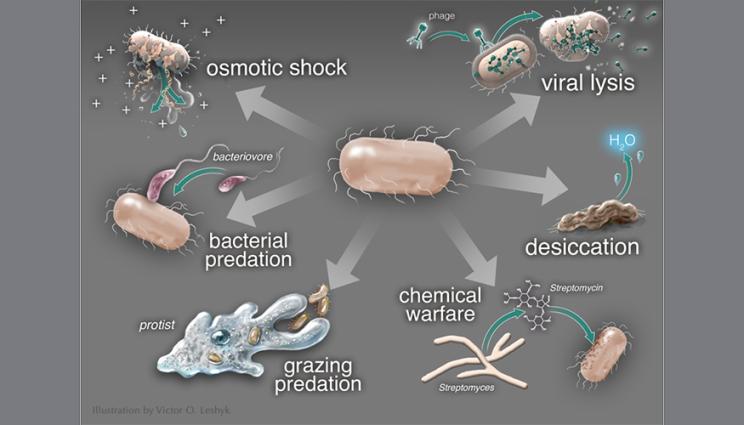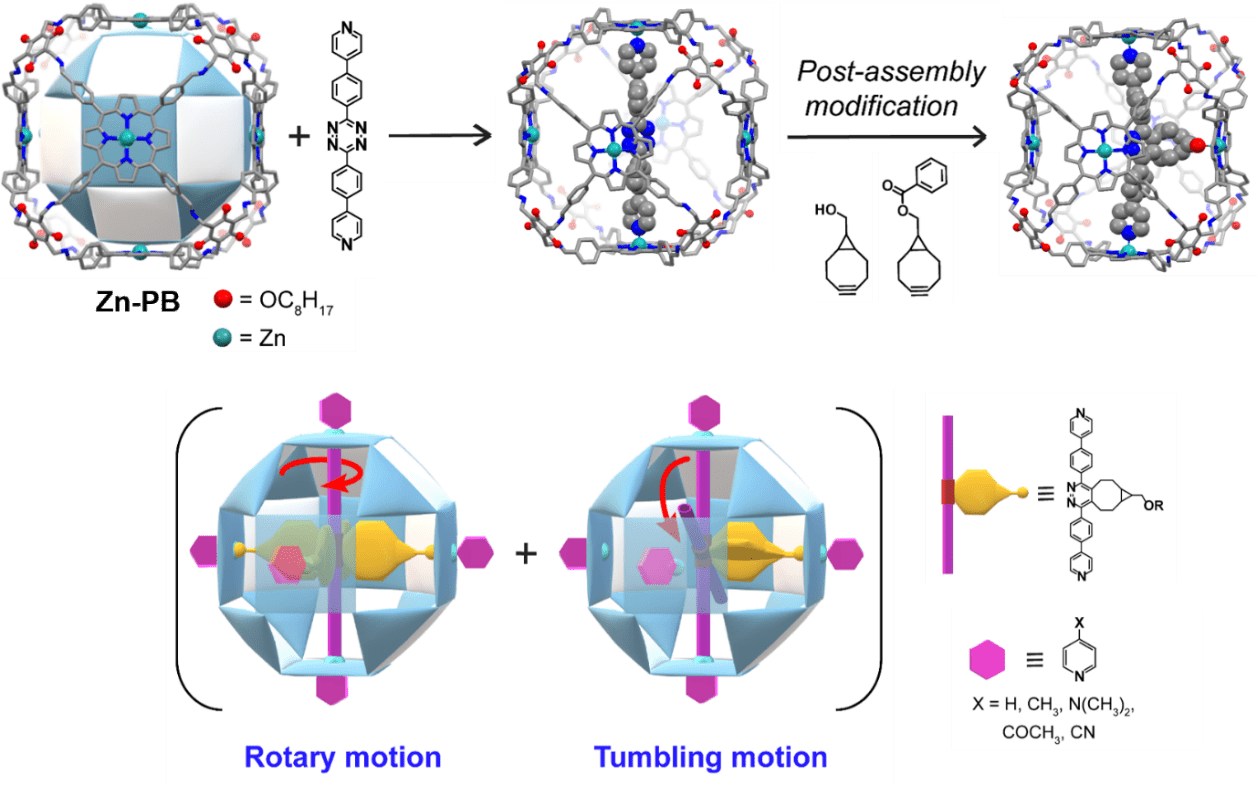2022-03-03 ローレンスリバモア国立研究所

土壌中の死んだ微生物バイオマス(微生物ネクロマス)は、地球上で最も大きな有機炭素のプールの一つを形成しています。ウイルスの溶解、捕食、浸透圧ストレス(上図)など、さまざまな微生物の死滅メカニズムが、微生物の死骸の化学組成や土壌有機炭素としての長期的な持続性に影響を与える可能性があります
Image courtesy of Victor O. Leshyk/Center for Ecosystem Science and Society, Northern Arizona University.
<関連情報>
- https://www.llnl.gov/news/dead-or-alive-microorganisms-soil-shape-global-carbon-cycle
- https://www.nature.com/articles/s41579-022-00695-z.epdf?sharing_token=zKlsAsTuRJHA82XfEse509RgN0jAjWel9jnR3ZoTv0PkPNkytQPPklIQBUdmpMemo8jymWoU7bOBSbGWnZv91h1NWS322Wz9OvPsPAMUmP0xZigpb2YiSVG8qub0ehnS9VqZQnR4Yv119iTLOdkTbLxK-Xh6G68XS72XK3fnuAg%3D
- https://www.nature.com/articles/s41579-022-00695-z
土壌マイクロバイオームの生と死:生態学的プロセスが生物地球化学に与える影響Life and death in the soil microbiome: how ecological processes influence biogeochemistry
Noah W. Sokol, Eric Slessarev, Gianna L. Marschmann, Alexa Nicolas, Steven J. Blazewicz, Eoin L. Brodie, Mary K. Firestone, Megan M. Foley, Rachel Hestrin, Bruce A. Hungate, Benjamin J. Koch, Bram W. Stone, Matthew B. Sullivan, Olivier Zablocki, LLNL Soil Microbiome Consortium & Jennifer Pett-Ridge
Nature Reviews Microbiology (2022) Published: 28 February 2022
Abstract
Soil microorganisms shape global element cycles in life and death. Living soil microorganisms are a major engine of terrestrial biogeochemistry, driving the turnover of soil organic matter — Earth’s largest terrestrial carbon pool and the primary source of plant nutrients. Their metabolic functions are influenced by ecological interactions with other soil microbial populations, soil fauna and plants, and the surrounding soil environment. Remnants of dead microbial cells serve as fuel for these biogeochemical engines because their chemical constituents persist as soil organic matter. This non-living microbial biomass accretes over time in soil, forming one of the largest pools of organic matter on the planet. In this Review, we discuss how the biogeochemical cycling of organic matter depends on both living and dead soil microorganisms, their functional traits, and their interactions with the soil matrix and other organisms. With recent omics advances, many of the traits that frame microbial population dynamics and their ecophysiological adaptations can be deciphered directly from assembled genomes or patterns of gene or protein expression. Thus, it is now possible to leverage a trait-based understanding of microbial life and death within improved biogeochemical models and to better predict ecosystem functioning under new climate regimes.



